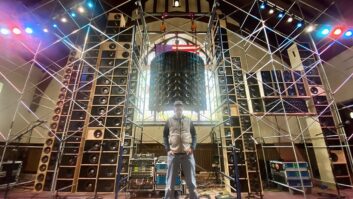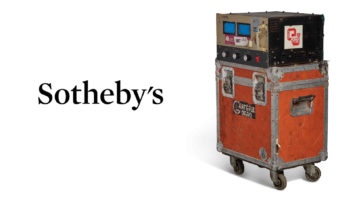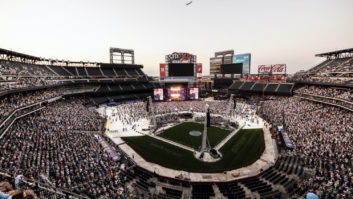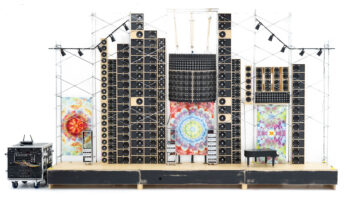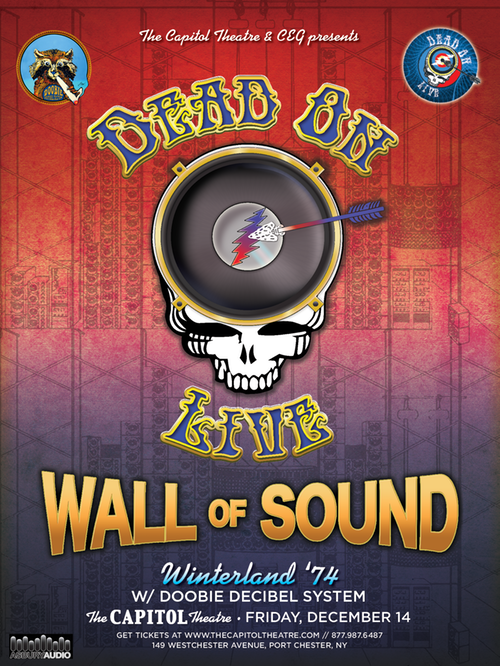
Port Chester, NY (December 6, 2018)—When is a jamband not quite a jamband? When it’s playing meticulously transcribed, note-for-note recreations of legendary shows by the most popular jamband ever, The Grateful Dead. That’s what New Jersey-based tribute act Dead On Live does on stage regularly for rapturous audiences, but on December 14, the group will take it to the next level by performing at the Capitol Theatre in Port Chester, NY through a recreation of the Grateful Dead’s legendary Wall of Sound audio system.
Founded in 2010, Dead On Live is the musical brainchild of Marc Muller. No stranger to exacting live performance—he was in Shania Twain’s live band for 10 years, working with Mutt Lange, to name just one gig—Muller writes musical notations for entire albums and concerts and then performs them on stage with seasoned pit musicians from the New York scene. Still, when fellow Deadhead Jason Dermer of Asbury Audio (Asbury Park, NJ) suggested a few years ago that they attempt the Wall of Sound, Muller was taken aback. “I thought he was crazy—and maybe he is—but so am I!” he laughed. “Who else transcribes Grateful Dead note for note? So two crazy guys got together and put this thing on stage.”
It’s no ordinary stage, either. The Cap, as it’s known locally, is considered sacred ground in Grateful Dead circles, as the group played there 18 times in the early 1970s, including a string of landmark shows in February, 1971. The Dead never brought the real Wall of Sound to the Cap though, which makes the production all the more important to Muller and Dermer. In fact, while Dead On Live performs regularly, the Cap show marks only the second time the tribute act has staged the Wall, the first time being a Halloween show in 2014 at New Jersey’s Paramount Theatre.
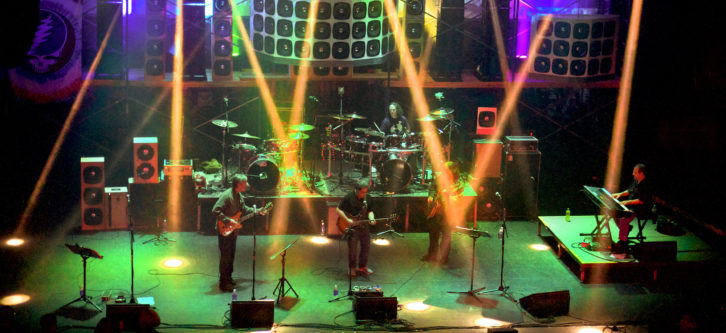
“I got to see the original Wall of Sound at Roosevelt Stadium in 1974 and I remember it well,” Muller reminisced. Nonetheless, Dermer had to research it for the production. “The Dead are probably one of the most well-documented bands,” he said, “so it wasn’t tough to get a hold of the information of what they were doing.”
That’s not too surprising. For a band with as much history surrounding it as the Grateful Dead, the short-lived Wall of Sound still stands out as a unique chapter in the band’s mythology—the end result of a collaboration between an audio team that wanted to create a massive, distortion-free sound system, and a band that was well-heeled and laissez-faire enough to fund the 75-ton experiment.
The original Wall of Sound, as envisioned in 1972 by audio engineer Owsley “Bear” Stanley and created with Dan Healy, Mark Raizene, Ron Wickersham, Rick Turner and John Curl, was a true physical wall of speakers, comprised of six separate PAs placed on scaffolding behind the Grateful Dead, acting as a simultaneous monitor and house system. Each instrument and vocal had its own dedicated speakers within the wall, which resulted in low intermodulation distortion and inadvertently provided on-stage localization of sound to a performer.
“It was essentially a very early version of line arrays, stacking boxes 30-40 feet in the air, all with the same signal in them and getting that coupling,” said Dermer. “The front row, 15 feet in front of it, got sound from three or four boxes, but as the sound went further out, it coupled more so it didn’t have to be punishingly loud on stage to carry through—they had enough boxes that it could play for miles.”
That sheer number of boxes was ultimately why the original Wall came down for good. The band performed through a preliminary version in February, 1973, and every tweeter blew during the first song. Undeterred, the Dead began touring with the Wall of Sound in March, 1974, only to retire it seven months later when Wall-related production costs spiraled out of control. “It was too big not to fail,” quipped Muller.
Nonetheless, the Wall of Sound was preserved for eternity when the band filmed five shows at San Francisco’s Winterland in October, 1974—the concerts at the heart of The Grateful Dead Movie.
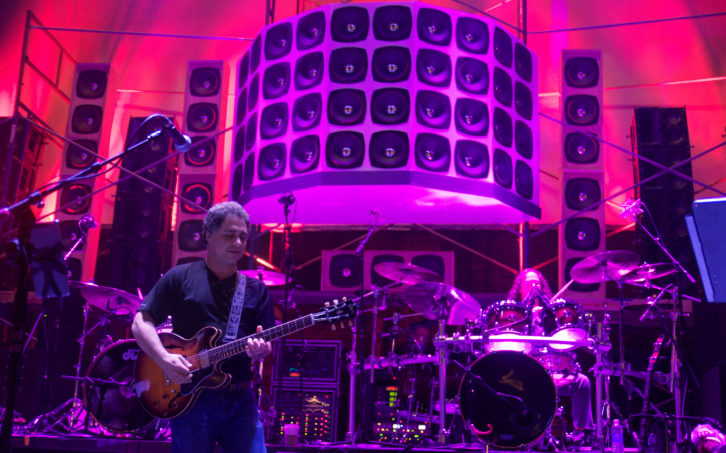
Dead On Live will be performing choice cuts from the film and its related live album, Steal Your Face, at the Cap, so it seemed like the right time to revive the replica Wall of Sound. The new, roughly half-scale version isn’t a strict copy, as Dermer opts to use modern-day gear and take advantage of the last 45 years’ worth of audio advancements. Each instrument gets five small-format L2821 line array boxes from Slovenia-based ADR Audio (Asbury Audio is its U.S. distributor), and the show will be mixed on an Avid Venue Profile console. “I have access to a Gamble EX56 and we were going to go all-analog with it, but based on the time constraints and putting it all together, we’re going with the Profile,” said Dermer.
Perhaps the most noticeable technical difference will be the show’s vocals. With the original Wall, two condenser mics were used out of phase to capture each singer, with one picking up the voice and the other capturing the stage sound. Summed together, the stage was cancelled out and the resulting vocals were fed to a massive, horizontally curved center cluster.
“For me and a lot of people, that cluster was one of the original Wall of Sound’s defining features,” said Dermer. “The original design, using the differential mics, didn’t work fantastic then; I’m sure with some technology and time, we could get it to work now, but on a one-off, to design the cluster, the mics and everything else, it’s not worth the time.”
The dramatic curved center cluster still appears on stage, albeit as a prop, and vocals are instead sent to the installed house line array at stage left and right. As a result, stage wedges and single-ear IEMs provide the band with vocal monitoring, but everything else follows the design principles of the Dead’s wall, said Dermer: “As far as all the instrumentation goes, it works like the original—everything that comes out of the amps goes out to my console, gets processed, routed and sent back to its own PA, so they hear what the audience hears.”
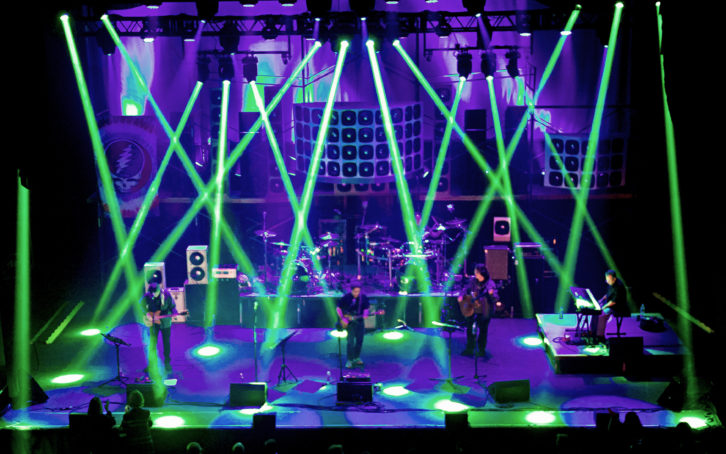
For Muller and the band, playing through the Wall of Sound can be a mind-blowing experience. “It was pretty surreal standing on stage with it in 2014,” Muller recalled. “We didn’t know what to expect. We thought we were going to get blown off the stage with volume, but it was really wonderfully managed. It filled the room to the furthest seat in the same way that the Grateful Dead were trying to achieve—the same clarity and volume.”
Back at the mixing desk, Dermer was pretty excited as well: “Phil Lesh said the original Wall of Sound was like ‘riding your own sound wave.’ It truly was! I used a Midas Pro6 that time and was barely lighting any signal lights, but the sound was huge. In theaters, you sit around 100 dB, maybe 105 on a loud rock show, but we ran 92-95 dB all night. The sound was absolutely enormous, but it had a clarity that I’ve never heard. Everything that people said about the original, that it was the finest-sounding PA? I feel that we truly did a decent recreation of that. No IM distortion, no trying to separate the backline from this sound or that sound; everything was truly on its own and it was fantastic. I’m really looking forward to doing it again at the Cap.”
For now, all involved are getting ready for December 14. “I feel guilty because Jason’s doing all the heavy lifting, putting the audio together,” said Muller. “I’m right now in the process of relearning the Winterland material. It takes months of preparation learning our individual parts, and then you get together for the first time after everyone’s done their homework and it’s surreal. It’s like being in the middle of the show—like you’re filling in for Jerry Garcia, but the others in the band are still there. It’s really wonderful.”
Dead On Live • http://www.deadonlive.com
Asbury Audio • http://asburyaudio.com
The Capitol Theatre • http://www.thecapitoltheatre.com
